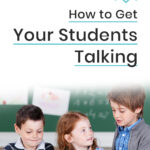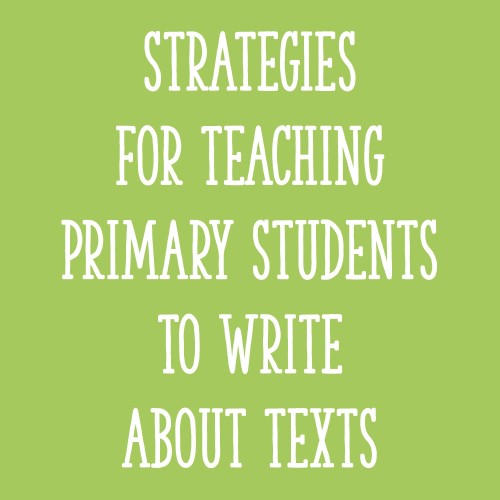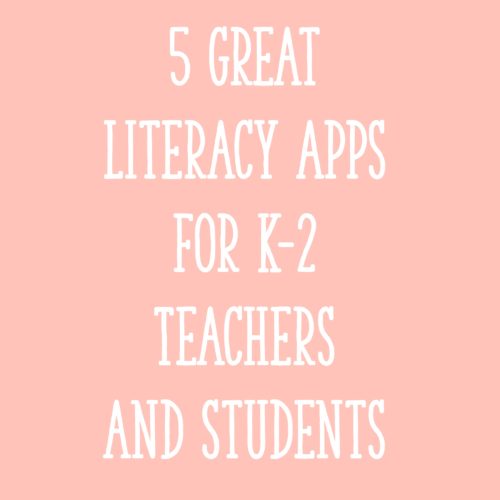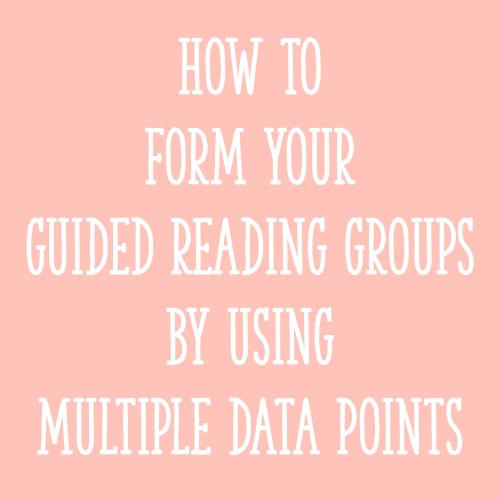I would bet you’ve said “They won’t stop talking!” at least once about your students. 🙂 I know I have! When we have lots to fit into the school day (which is every day, right?!), it can be frustrating when kids won’t stop chatting.
However…student “talk” can actually be a great thing! When student talk is focused around academics, it helps kids develop oral language skills, practice vocabulary, solidify their understandings of content material, etc. And student talk is an especially powerful tool for supporting students with their writing.
If you’ve ever had students:
- Struggle to choose a writing topic,
- Get “stuck” while drafting,
- Fail to include details or key information in their writing, or
- Have trouble revising or editing their work,
then you are definitely going to want to read this post! Because today I’m writing about how to solve these problems by simply having students talk. And even though the title emphasizes reluctant and struggling writers, these strategies are beneficial for all students!
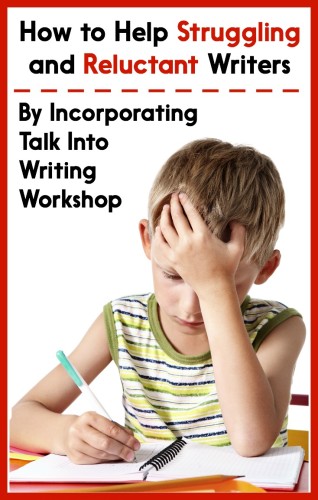
1. Have students talk to a partner about what they want to write about, or what they want to write about next.
When I have students start a new writing project, I ask them to do quite a bit of talking before they ever pick up a pencil. When I’ve finished explaining the project, I have students turn and talk to a partner about potential topics. Asking students to verbalize what they want to write about forces them to choose a topic right away (instead of wasting time sitting at their seats, trying to choose a topic on their own). And if they’re struggling, I teach students that partners can help each other choose topics.
But what about when students are already working on a writing project? Talking to a partner can help them gain momentum and keep going. When I’ve finished a minilesson and know that students are in the middle of a writing project, I have them go back to their seats. They take out what they’ve written so far, read it to the person sitting next to them, and then tell their partner what they intend to write about next. If the writer is “stuck” and not sure what to write, partners can make suggestions.
2. Have students talk to a partner to plan out their writing.
The writing lessons that I use encourage students to plan out their writing before they get started. Having students talk to a partner is one way to get them to plan out a story. When I used Lucy Calkins’ “old” writing units, one lesson has students plan a story “across their fingertips.” Students use their fingers to tell a partner what happens first, next, and last in the story.
Graphic organizers and drawing are other great ways for young writers to plan out a piece. But sometimes students have trouble taking a completed graphic organizer/drawing and turning it into writing. Talking can help bridge this gap. Have your students take out their completed graphic organizers or drawings and explain them to a partner. This helps them get ready to write.
3. Have students talk to a partner to revise and edit their writing.
In this post, I wrote about how creating a Revising and Editing Table for my classroom was incredibly motivating and effective for my students. My kids, who had previously struggled to do any revising and editing at all, were suddenly able to make significant changes to their work with the help of a partner.
When you have students partner up to revise and edit their writing, you’ll want to first spend time teaching them how to talk to each other. Children need to learn how to a) speak respectfully to each other about writing, b) stay on-topic, and c) provide useful feedback to their peers. I like to print out sentence starters on strips of paper so that students can have something in front of them during a peer conference. The sentence starters shown below are from my K-2 Revising and Editing Toolkit.
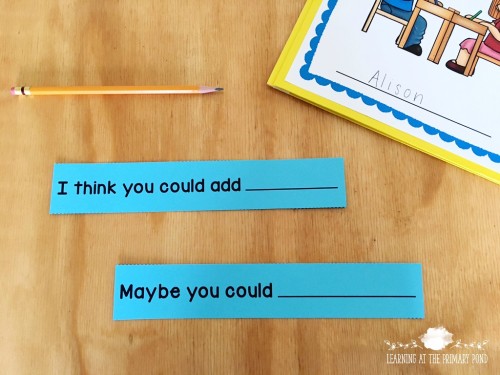
Of course, before I even give students the sentence starters, I spend time teaching the class how to use them. I have a child bring her work up to the front, and I model how to use the sentence starters to guide our conversation. I also have students practice reading the sentence starters with me (multiple times, especially if I’m working with K-1 students).
4. Have students use dialogue to empower and encourage each other as writers.
This last one is my favorite way to use talk during writing workshop time. 🙂 I often have students share what they’ve written with a partner at the end of the workshop. I ask each writer to give their partner at least one compliment after listening to their work. Sometimes I have a student or two share with the whole class, and then several students provide compliments.
My students understand that it’s not always rainbows and sunshine, because they also know how to give serious feedback to a partner. But giving them an opportunity to express and receive verbal compliments is a great way for them to encourage each other. This is especially important for motivating struggling or reluctant writers.
Your Turn
What do you think about this list? Are there any other ways that you use talk to support your little writers? Please comment below!
Happy teaching!
Disclosure: An Amazon affiliate link is included in this post.

